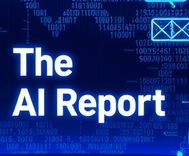NASA, IBM’s ‘Hot’ New AI Model Unlocks Secrets of Sun

The AI Report
Daily AI, ML, LLM and agents news
Unlocking the Sun's Secrets: NASA's AI Model, Surya, Revolutionizes Space Weather Prediction
Imagine accurately predicting solar storms that disrupt GPS, power grids, and communications. NASA, in partnership with IBM, has launched the Surya Heliophysics Foundational Model, a groundbreaking artificial intelligence (AI) model trained on nine years of data from NASA’s Solar Dynamics Observatory (SDO). Surya is set to transform our understanding of the Sun and enhance our defenses against unpredictable space weather.
Advanced Solar Flare Forecasting
Forecasting solar flares, intense radiation bursts preceding major space weather events, has long been a challenge. Surya changes this. Preliminary results show this powerful AI model surpasses existing solar flare forecasting benchmarks by an impressive 16%. Crucially, it generates visual predictions up to two hours in advance. This significant leap makes AI an operational tool for critical space weather prediction, providing vital lead time for satellite operators and power grid managers to mitigate potential damage.
Leveraging Data for Unprecedented Insight
Surya’s success stems directly from SDO’s consistent, high-resolution data. Launched in 2010, SDO has provided an unbroken record of the Sun for nearly 15 years, capturing images every 12 seconds and precise magnetic field measurements. This stable, well-calibrated dataset, covering an entire solar cycle, is ideal for training AI models like Surya, enabling it to detect subtle, long-term patterns missed by shorter datasets.
Surya's innovative foundation model architecture learns directly from raw solar data, unlike traditional AI that requires extensive labeling. This design makes it highly adaptable to new tasks, including tracking active regions, forecasting flare activity, predicting solar wind speed, and integrating data from other observatories such as SOHO and Parker Solar Probe. As Kevin Murphy, chief science data officer at NASA Headquarters, stated, "We are advancing data-driven science by embedding NASA’s deep scientific expertise into cutting-edge AI models, making it easier to analyze the complexities of the Sun’s behavior with unprecedented speed and precision."
Protecting Our Modern World from Space Weather
Solar storms pose significant risks. Powerful events energize Earth's ionosphere, causing GPS errors or complete signal loss. Geomagnetically induced currents from coronal mass ejections (CMEs) can overload transformers, leading to widespread power outages. Commercial aviation faces disrupted radio communications, navigation systems, and increased radiation exposure for high-altitude flights.
For human spaceflight to the Moon or Mars, precise space weather predictions are paramount for astronaut safety, enabling them to shelter from intense radiation during solar particle events. The growing number of low Earth orbit satellites, providing global high-speed internet, is also vulnerable. Increased solar activity heats Earth’s upper atmosphere, causing drag that can pull satellites from orbit. Surya offers satellite operators a crucial tool to anticipate and respond to these threats.
Joseph Westlake, Heliophysics Division director at NASA Headquarters, emphasized, "Our society is built on technologies highly susceptible to space weather. Applying AI to data from our heliophysics missions is a vital step in increasing our space weather defense to protect astronauts and spacecraft, power grids and GPS, and many other systems that power our modern world."
Open Science, Global Impact
While focused on the Sun, Surya’s versatile architecture can be adapted across scientific domains, from planetary science to Earth observation. This project establishes foundational infrastructure for future AI-driven scientific discovery.
Adhering to NASA’s open science commitment, Surya is freely available online to researchers, educators, and students worldwide via HuggingFace and GitHub. This open-access approach lowers barriers, fostering innovation. This initiative was significantly supported by the National Artificial Intelligence Research Resource (NAIRR) Pilot, a National Science Foundation (NSF)-led effort providing crucial access to advanced computing, datasets, and AI tools, demonstrating powerful synergy between federal and industry resources, including NVIDIA.
Surya marks a pivotal moment, showing how AI, powered by decades of observational data, can unlock complex mysteries and protect our interconnected world. It's an invitation to explore, innovate, and contribute to the next chapter of space exploration and Earth resilience.

The AI Report
Author bio: Daily AI, ML, LLM and agents news
